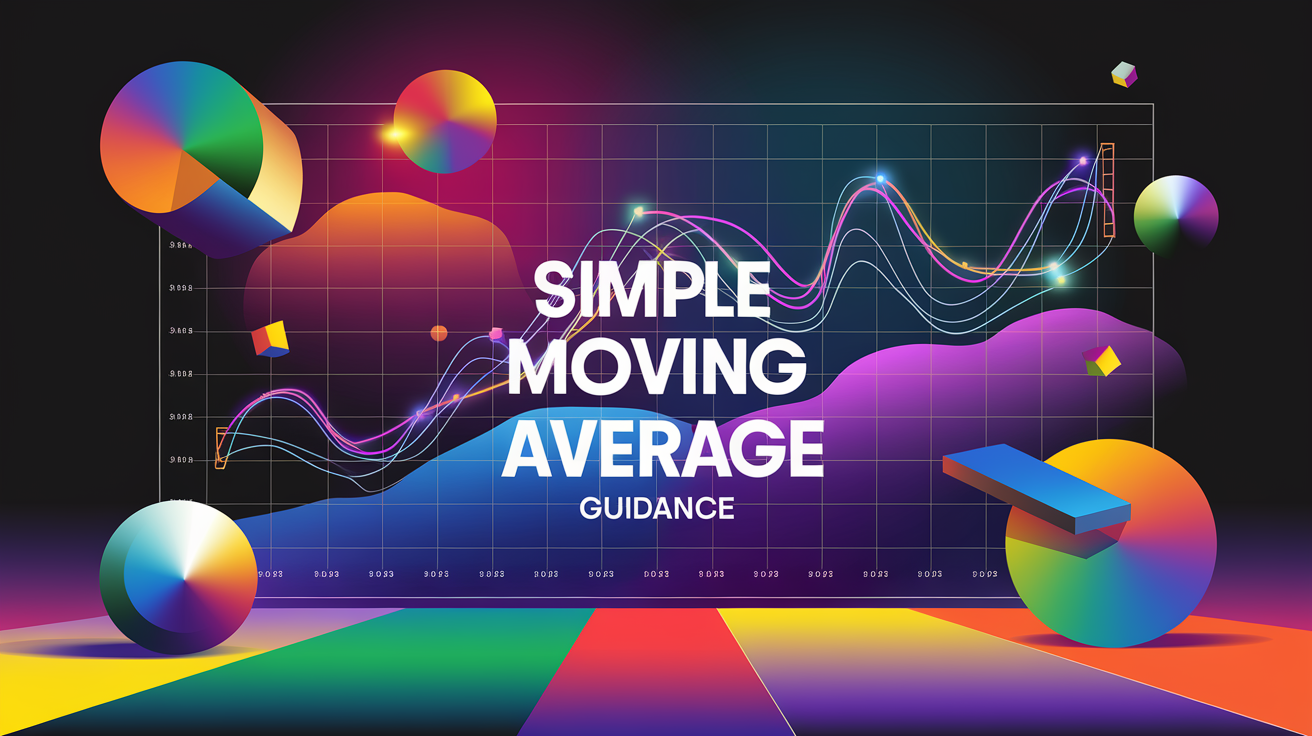In binary options trading, understanding price movements is crucial to success. One of the most effective tools for analysing market trends is the Simple Moving Average (SMA). Whether you’re a beginner or a seasoned trader, using the SMA indicator can provide valuable insights into price trends and help refine your trading strategy. This guide will explain how the moving average strategy works and how you can apply it in binary options trading.
Table of Contents
What is a Simple Moving Average (SMA)?
The Simple Moving Average (SMA) is a widely used tool in technical analysis. It calculates the average price of an asset over a specific period. By smoothing out price fluctuations, the SMA helps traders identify the overall direction of a market, whether it’s moving upwards (bullish) or downwards (bearish). Unlike more complex indicators, the SMA is straightforward, making it perfect for beginners.
Key Points:
- SMA represents the average price of an asset over a set time frame.
- Common periods for SMA include 10, 50, or 200 days, depending on whether you’re analysing short-term trends or long-term trends.
- The SMA is used to filter out “noise” in market prices and focus on the overall direction.
How Does the SMA Indicator Work?
The SMA calculates the average closing price of an asset over a certain period. For instance, a 10-day SMA adds up the closing prices of the past 10 days and divides that sum by 10. This moving average is then plotted on a chart to show traders how prices are trending over time.
By comparing the current price with the SMA, traders can make more informed decisions about whether an asset is likely to rise or fall in the short term. The SMA is also useful for spotting potential entry points and exit points in binary options trading.
Example:
- If the current price of an asset is above its 50-day SMA, it indicates an upward trend, and traders might consider placing a call option.
- If the current price is below the 50-day SMA, it suggests a downtrend, which could be a signal for a put option.
Using SMA in Binary Options Trading
The SMA can be applied in multiple ways when trading binary options. Here’s how you can integrate the SMA into your binary strategies:
1. Identifying Short-Term and Long-Term Trends
One of the primary uses of the SMA indicator is to determine short-term trends and long-term trends. Short-term SMAs (e.g., 10-day SMA) are best for identifying quick price movements, while long-term SMAs (e.g., 50 or 200-day SMA) are more reliable for gauging overall market direction.
For binary options traders, this is critical because it allows for making decisions based on the time frame of the trade. If you’re looking at a short-term trade, using a shorter SMA (like 10 or 20 days) will provide more actionable signals. For long-term trades, a longer SMA (50 or 200 days) will give a broader view of the market’s direction.
2. Entry Points and Exit Points
SMA also helps determine the best entry points and exit points in your trades. Traders often look for the price crossing the moving average line as a signal:
- Bullish Signal: When the price crosses above the SMA, it suggests that the asset is gaining momentum, which could be an ideal entry point for a call option.
- Bearish Signal: When the price falls below the SMA, it signals a potential downtrend, which could be a good exit point or a signal to place a put option.
Benefits of the SMA Trading Strategy
The moving average strategy offers several advantages, particularly for beginners:
- Simplicity: The SMA is easy to understand and apply, making it an ideal starting point for novice traders.
- Clear Signals: The SMA provides clear signals based on price trends, reducing guesswork in binary options trading.
- Versatility: The SMA can be used across different asset classes, time frames, and binary options contracts.
Common Moving Average Crossover Strategies
One of the most popular strategies using the SMA is the moving average crossover. This strategy involves tracking two different SMAs (e.g., 10-day and 50-day) and looking for points where they cross.
Golden Cross
A Golden Cross occurs when a short-term moving average (e.g., 10-day) crosses above a long-term moving average (e.g., 50-day). This crossover is considered a strong bullish signal, indicating that prices may continue to rise.
Death Cross
A Death Cross happens when a short-term moving average crosses below a long-term moving average. This is seen as a bearish signal, suggesting that prices may continue to fall.
These average crossovers provide traders with concrete signals that can help improve decision-making when trading binary options.
Conclusion
Mastering the Simple Moving Average (SMA) is an essential step for beginners in binary options trading. By identifying price trends, pinpointing entry points and exit points, and leveraging average crossovers, the SMA can greatly enhance your trading success. Whether you’re trading in the US, UK, or Australia, integrating the moving average strategy into your approach can help you make more informed, confident trading decisions.





